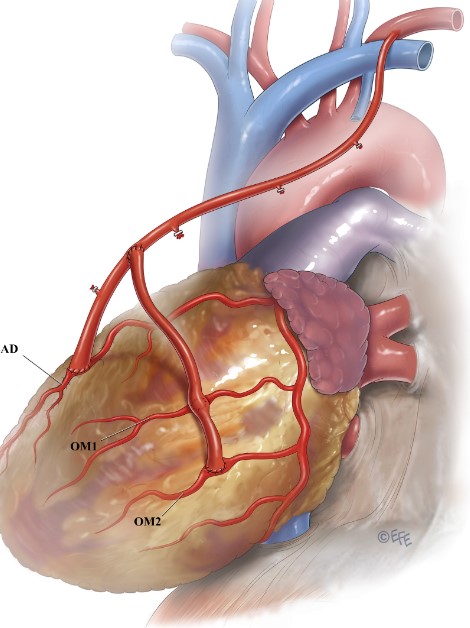Total Arterial Revascularization
- Home
- Total Arterial Revascularization

What is Total Arterial Revascularization?
In coronary artery bypass grafting (CABG) procedure, total arterial revascularization is a surgical technique used to bypass blocked or narrowed coronary arteries with arterial grafts only in order to restore heart blood flow. Total arterial revascularization maximizes the use of arteries taken from other parts of the body to provide multiple arterial conduits for bypass grafting, in contrast to traditional CABG procedures that primarily use vein grafts in addition to Left Internal Mammary artery. Arterial grafts such as the radial artery or internal mammary artery (IMA) are taken from the forearm or chest wall, respectively, during a total arterial revascularization.
Why Total Arterial Revascularization ?
Since arterial grafts have higher patency rates than venous grafts, total arterial revascularization is recommended for younger patients with longer life expectancies.

Advantages of Total Arterial Revascularization:
Improved long-term graft patency: Arterial grafts have been shown to have superior long-term patency rates compared to vein grafts, reducing the risk of graft failure and the need for repeat interventions.
Enhanced durability: Arterial grafts are less prone to atherosclerosis and degeneration over time, resulting in better graft survival and sustained blood flow to the heart muscle.
Reduced risk of adverse events: Total arterial revascularization has been associated with lower rates of major adverse cardiac events, such as myocardial infarction or repeat revascularization, compared to procedures utilizing vein grafts.
Book an Appointment
Take the first step towards prioritizing your heart health by scheduling a personalized consultation with our expert team today.
